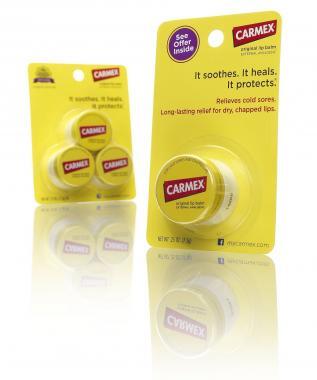Rohrer offers a wide variety of custom packaging solutions and the industry’s largest combo program to help our partners build their brand and bottom line.
 Many people are unsure of the technical name of the type of packaging they see on the retail shelf every day. They might refer to the plastic and board packaging for their office supplies, health and beauty products, pet, or hardware as a “bubble package,” primary packaging, or simply retail packaging. Others know that it’s something to do with being thermoformed, but not the specific terms for the components.
Many people are unsure of the technical name of the type of packaging they see on the retail shelf every day. They might refer to the plastic and board packaging for their office supplies, health and beauty products, pet, or hardware as a “bubble package,” primary packaging, or simply retail packaging. Others know that it’s something to do with being thermoformed, but not the specific terms for the components.
One of Rohrer’s specialties is blister packaging. A blister package secures your product between a thermoformed plastic part (blister) and a printed paperboard backing (blister card). Blister packaging provides many benefits for packaging your product, including visibility and billboard space, short lead-times, and low costs.
Although we have shared many of our partners’ stories and posted content about blister packaging before, we know there’s value in getting back-to-basics with the terminology. That’s why we’ve compiled a glossary of blister packaging terms to help your team navigate the process.
Thermoformed Packaging:
Blister – A type of packaging made with a variety of clear plastic materials including PVC, rPET, rPETG, APETG, and HIPS, with thicknesses from .010 to .040. A sheet of plastic is heated and vacuum-formed over a mold and immediately die-cut into the trim shape required. Rohrer’s blisters are guaranteed to auto-feed. Blisters are often heat-sealed to a blister card
Combo Blisters, ezCombo® – A design and manufacturing service allowing the production of multiple blister packages within the same production. This shared tooling arrangement increases speed and reduces start-up costs and set-up times for all customers
Face Seal Blister – A blister formed to hold a product with a flange range of .125” to .5” designed to seal to the card
Footed Blister – A pedestal is added under the product and added to the thermoformed part design allowing the entire package to stand on a flat surface
Full Face Blister – A blister formed to hold a product with the flange covering and heat-sealed to the entire front of the blister card
Mock Clamshell – Similar in appearance to traditional clamshell packaging (clear packaging with one or more hinges), this package incorporates a thermoformed blister front and flange extending around the back of a corresponding blister card for complete product protection
Strength rail – A ridge added to the perimeter of the blister to enhance the rigidity of the package when heat-sealed to the card
Thermoforming – The manufacturing process of forming plastics by: heating plastic sheets with upper and lower plates, making it pliable, and molding it to shape using vacuum, pressure, mechanical assists, or a combination. The plastic is cooled, causing it to become rigid
Trapped Blister – The thermoformed plastic part held in-line by two cards heat-sealed together
Tray – Often produced using the same process as blister packaging, this thermoformed part holds products in place often inside a paperboard or rigid plastic carton
Two-piece Blister – Made of two separate pieces, this complimentary thermoformed part design is typically used in trapped blister designs, allowing consumers to view both the front and back of products
Printed Packaging:
Blister Cards – A paperboard card that is decorated, coated with a sealing agent, and cut to size. Blisters are often heat-sealed to a blister card.
ClubPak® – Rigid card stock designed for club stores
Combo Blister Cards, ezCombo® – Press sheets set up with many different packages on the same sheet, providing customers efficiencies and value
Directionality – As paper runs through the printer, directionality is identified as machine direction (fed into machine, parallel) or cross direction (perpendicular). The material properties are different between these directions, for example tearing or folding may be improved or reduced based on directionality. Other terms include grain direction, fiber alignment, cross grain, cross web, and transverse direction
Hang Holes – The die-cut hole used to position the blister card and product on peg-board displays in retail stores
Inserts – Non blister coated card designed to go inside clamshells or blisters for additional billboard space
Endura SP™ – Synthetic paper that prints like paper but performs like plastic, tear-resistant and ideal for outdoor use
Paperboard – The general term for many types of packaging products. Also referred to as board, the term includes bending boxboard, card stock, chipboard, pulpboard, white-lined board, etc. The International Standards Organization (ISO) states that paperboard is defined as material weighing more than 250 grams per square meter (51 pounds per 1,000 square feet).
Process+™ – A new color matching printing technology that uses a 7-color ink set (CMYK+OGV) allowing Rohrer to match over 90% of the Pantone Plus Series Color Guide. This expanded color offering allows nearly endless color choices without adding spot color fees
Spot Color – A pre-mixed ink matched to customer specifications and printed from a dedicated plate
Tear Resistant Cards – Specialty card stock used for trapped blister packages and club store packaging and can be run Flexo or offset with water-based or UV coating; stronger hang holes for heavier items and increased security for high-value products
Sealing:
Heat Seal – The process or type of bond between the blister and card. A dedicated machine heats specific parts of the packaging, activating the coating and applying pressure to adhere the plastic and paperboard parts
Heat Seal Tooling – Dedicated parts to run blisters in heat seal machinery. Rohrer’s team of heat-seal experts design tooling for every type of heat seal machines
AquaSeal®, Aqueous Adhesive – A water-based heat-seal coating designed to seal PVC
AquaSeal Pro® – A water-based heat-seal coating designed so seal both PVC and PET
Cold-Seal Adhesive – Self-adhering front and back cards seals well to itself
PakSeal®, Solvent Adhesive – A premium solvent-based coating that seals faster than any other coating on the market; solvent-based coatings are made by dissolving a resin in an organic solvent
PressSeal® – A pressure activated coating for trapped blisters and ClubPak applications only
Once you’ve mastered blister packaging terminology, you’re ready to branch out! Here are some recommendations:
- More information on processes and coating can be found here
- More information about custom thermoformed packaging can be found here.
- Check out the solutions gallery here
To talk with our team about your product specs and packaging design, fill out this form:



